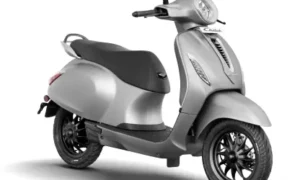Introduction:
Wheels and tires are essential for any vehicle, serving as the interface between the road and the car. They are critical in ensuring safety, handling, and overall performance. However, the world of wheels and tires is vast and intricate, with numerous factors to consider when selecting, maintaining, and optimizing them for various driving conditions. This comprehensive guide will explore the different types of wheels and tires and their functions. We will provide
essential information to help you make informed decisions and maximize your driving experience.
The Importance of Wheels and Tires are:
- Crucial components of any vehicle.
- Playing a vital role in ensuring safety.
- Performance.
- Overall driving experience.
They are the primary point of contact between the car and the road surface, and their design and characteristics significantly impact various aspects of driving, including handling, traction, and stability.
The Role of Wheels:
Wheels serve as the foundation of a vehicle’s suspension system and support the vehicle’s weight. They transmit power from the engine to the road, allowing the car to move forward or backwards. In addition to their structural role, wheels also significantly impact the vehicle’s performance and aesthetics.
- Structural Support: Wheels bear the vehicle’s weight, including passengers, cargo, and other components. They distribute the load evenly across the tire’s contact patch and the suspension system, ensuring stability and a smooth ride.
- Power Transmission: Through the drivetrain, wheels transfer the torque generated by the engine to the road, propelling the vehicle forward. The efficiency of this power transfer affects acceleration, towing capacity, and fuel economy.
- Handling and Steering: The design and construction of wheels play a crucial role in the vehicle’s handling characteristics. Wheels with proper rigidity and offset contribute to precise steering response, cornering stability, and overall vehicle control.
- Brake Compatibility: Wheels are designed to accommodate the vehicle’s braking system, including brake callipers, rotors, and pads. Proper wheel selection ensures optimal braking performance and heat dissipation, which is crucial for safety and longevity.
The Significance of Tires:
Tires are the only point of contact between the vehicle and the road surface, making them critical for safe and efficient driving. They influence traction, grip, braking distance, and handling characteristics in various driving conditions.
- Traction and Grip: Tires provide traction to maintain contact with the road surface, allowing the vehicle to accelerate, brake, and maneuver safely. The tire’s tread pattern and rubber compound significantly impact its grip on different surfaces, such as dry pavement, wet roads, or snowy terrain.
- Braking Performance: The braking distance of a vehicle is directly affected by the quality and condition of its tires. Tires with proper tread depth and optimal grip ensure shorter braking distances and improved safety during emergency stops.
- Stability and Handling: Tires contribute to the vehicle’s stability and handling by providing lateral grip during cornering maneuvers. The sidewall stiffness, tread design, and tire width are crucial in maintaining control and preventing skidding or loss of traction.
- Ride Comfort and Noise: The design and construction of tires impact the overall comfort of the ride. Tires with proper sidewall flexibility and optimized tread patterns can absorb road imperfections and reduce noise, enhancing the driving experience.
- Fuel Efficiency: Tires also affect a vehicle’s fuel economy. Rolling resistance, the energy required to keep the tires in motion, directly impacts fuel consumption. Tires with lower rolling resistance can contribute to improved fuel efficiency.
Understanding Wheel Construction and Types
Wheels come in various constructions and types, each offering distinct characteristics and benefits. Understanding the different wheel options can help vehicle owners choose the most suitable ones based on their needs, preferences, and driving conditions. In this section, we will explore standard elite wheels constructions and the types available in the market.
Steel Wheels:
Steel wheels are a popular and cost-effective option in many vehicles, particularly in entry-level models or winter use. They are constructed using steel, which provides durability and strength. Steel wheels offer several advantages, including:
- Durability: Steel wheels are highly damage-resistant and can withstand impacts from potholes, curbs, and other road hazards better than other wheel materials.
- Affordability: Steel wheels are generally more affordable than alloy or Hostile forged wheels, making them a cost-effective choice for budget-conscious vehicle owners.
- Winter Performance: Steel wheels are commonly used for winter tires due to their durability and ability to withstand harsh winter conditions.
However, steel wheels have some drawbacks as well, including:
- Weight: Steel wheels tend to be heavier than alloy or Hostile forged wheels. The additional weight can affect fuel efficiency, acceleration, and handling performance.
- Aesthetic Appeal: Steel wheels lack the visual appeal and customization options available with alloy or Hostile forged wheels.
Alloy Wheels:
Alloy wheels are constructed using a combination of aluminum and other metals, such as magnesium or nickel. These wheels are known for their lightweight, strength, and aesthetic appeal. Alloy wheels offer several advantages, including:
- Weight Reduction: Alloy wheels are significantly lighter than steel wheels, reducing unspring weight. The reduced weight improves acceleration, fuel efficiency, and overall vehicle handling.
- Aesthetic Options: Alloy wheels come in a wide range of designs, finishes, and sizes, allowing vehicle owners to customize the appearance of their vehicles.
- Heat Dissipation: Alloy wheels dissipate heat more effectively than steel wheels, which is beneficial for braking performance, particularly during prolonged or aggressive driving.
- Performance Enhancements: The lighter weight and improved heat dissipation of alloy wheels, including handling and braking, contribute to better overall performance.
However, there are a few considerations when opting for alloy wheels:
- Cost: Alloy wheels are generally more expensive than steel wheels due to the use of premium materials and manufacturing processes.
- Vulnerability to Damage: Alloy wheels can be more susceptible to damage from curbs, potholes, and impacts than steel wheels.
Hostile forged Wheels:
Hostile forged wheels are constructed from a solid aluminum block or other metals using a specialized forging process. This manufacturing technique produces wheels with superior strength, durability, and performance. Hostile forged wheels offer several advantages, including:
- Strength and Durability: Hostile forged wheels are significantly stronger than cast or steel wheels, making them ideal for high-performance vehicles and demanding driving conditions.
- Weight Reduction: Hostile forged wheels are lighter than steel or alloy wheels, reducing unspring weight and improving performance.
- Customization Options: Hostile forged wheels can be significantly customized, allowing vehicle owners to choose specific designs, finishes, and sizes according to their preferences.
- Heat Resistance: Hostile forged wheels have excellent heat resistance properties, ensuring optimal performance during aggressive driving or on tracks.
However, Hostile forged wheels have a few considerations as well:
- Cost: Hostile forged wheels are typically the most expensive option due to the specialized manufacturing process and premium materials.
- Limited Availability: Due to the complexity of the forging process, Hostile forged wheels may have limited availability and options compared to other wheel types.
Composite Wheels:
Composite wheels are constructed using advanced carbon fiber or magnesium alloy materials. These wheels offer a combination of lightweight, strength, and aesthetics.
Decoding Tire Basics
Tires are a critical vehicle component, directly influencing safety, handling, and performance. Understanding the basics of tires can help vehicle owners make informed decisions when selecting the right tires. This section will delve into essential tire concepts and factors to consider.
Tire Types: A Comparative Overview
All-Season Tires:
All-season tires are designed to provide adequate performance in various weather conditions, including dry and wet roads. They offer a balanced combination of traction, comfort, and longevity. All-season tires typically have a tread pattern that can handle light snow or slush, making them suitable for moderate winter conditions in regions with mild winters.
Summer Tires:
Summer tires, also known as performance tires, are designed for optimal performance in warm weather conditions. They feature specialized tread patterns and rubber compounds prioritizing grip, responsiveness, and cornering capabilities. Summer tires excel in dry conditions and offer enhanced handling and braking performance at higher speeds. However, their performance may be compromised in cold or snowy conditions.
Winter Tires:
Winter tires, also called snow tires, are specifically engineered to provide superior traction and control in cold weather, icy roads, and snowy conditions. They have unique tread patterns with deep grooves and sipes, which enhance grip on slippery surfaces. Winter tires are made from rubber compounds that remain flexible even in freezing temperatures, ensuring optimal traction. They are highly recommended for regions with severe winters.
All-Terrain Tires:
All-terrain tires are designed for vehicles that frequently venture off-road or encounter challenging terrains. They offer a combination of on-road and off-road capabilities, providing good traction on various surfaces, including gravel, dirt, mud, and snow. All-terrain tires typically have an aggressive tread pattern with larger tread blocks for enhanced grip and self-cleaning capabilities.
Performance Tires:
Performance tires are engineered for high-performance vehicles or drivers seeking maximum handling, cornering, and braking capabilities. They feature specialized rubber compounds and tread designs that prioritize grip and responsiveness. Performance tires are commonly used in sports cars and for track or spirited driving. It’s important to note that performance tires may sacrifice longevity and ride comfort compared to other tire types.
Tire Size and Ratings
Tire Size:
Tire size is a crucial specification that denotes the dimensions of the tire. It is typically represented by a sequence of numbers and letters, such as P215/65R15. Here’s what each component of the size designation means:
- P: Denotes the tire type (P for a passenger vehicle)
- 215: Represents the tire’s width in millimeters
- 65: Indicates the aspect ratio, which is the ratio of the tire’s height to its width (65 means the tire’s height is 65% of its width)
- R: Stands for radial construction
- 15: Specifies the diameter of the wheel in inches that the tire is designed to fit
Ensuring that the tire size matches the vehicle’s specifications and recommended tire sizes is crucial.
Load Index and Speed Rating:
Tires also have a load index and speed rating specifications, which indicate the maximum load capacity and speed capability of the custom wheel and tire, respectively. A number represents the load index, while the speed rating is denoted by a letter—for example, 94V. The load index and speed rating are essential for selecting tires that can handle the vehicle’s weight and match its speed capabilities.









































